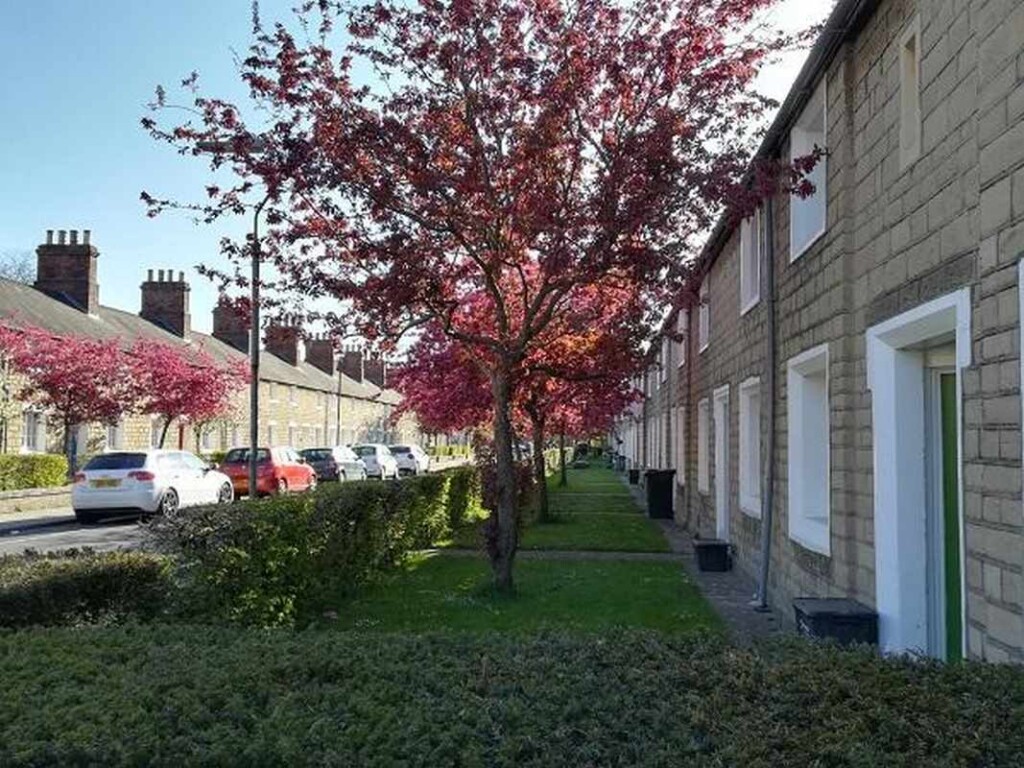 The Swindon Railway Village – credit, Swindon.gov released.
The Swindon Railway Village – credit, Swindon.gov released.A major restoration project in lower England has seen one of the world’s largest railworks turned into a modern celebration of this industrial heritage.
See all these pitched roofs and block houses? Once upon a time, they were homes provided for the workers of the Swindon Railway Village, where mechanics and laborers lived and worked near what was the railway engineering complex in the world at one point.
Between 1841 and 1842, the Great Western Railway (GWR) transformed what was a sleepy market town that had changed little since its inclusion in the Domesday Survey of the Normans in 1066 CE, into a hub of steam and enterprise organization.
Isambard Kingdom Brunel, arguably the greatest engineer Britain ever produced, established the ‘Swindon Works’ to construct and maintain steam locomotives that served the railways. This brought with it pioneering amenities such as the UK’s first modern public library and a ‘cradle-to-grave’ healthcare center that was later used as a blueprint for the National Health Service.
It also contained a whole village built to house and entertain the workers and their families, but over time, as the GWR lost its luster, the Swindon Works became largely obsolete, and until recently was the most dangerous neighborhoods in the city.
“I was robbed and mugged here, it was a no-go area”, said a 91-year-old former railway blacksmith, Jack Hayward, surveying the GWR Park in Swindon. “What they’ve done to transform it is remarkable.”
The Swindon Heritage Action Zone (HAZ) was launched in June 2019, as an ambitious five-year plan to revitalise the town’s unique railway heritage. As a partnership between Historic England, Swindon Borough Council, and other organizations, the HAZ has renewed, repurposed, and refurbished a large area including more than 300 historic buildings.
Historic heart, modern beat
The original Swindon Works designed by Isambard Brunel came with a large park that contained a cricket pitch and a pub for cricketers. The pub, which has been boarded up for decades, has been restored as a community hub and visitors center to the whole area, while the park has been expanded, cleaned, beautified, cloaked in flowers, and ornamented with trees along the borders of the original park plan.
Streets that had been altered have been returned to their original courses and dimensions according to photographs made of the Swindon Works during their heyday, and special bronze plates embedded in the cement sidewalks denote when you are walking on the heritage roads.

Cherry blossom trees have been planted in the gardens of the workers’ cottages, and plaques containing information and images on the history and landmarks of Works have been placed throughout the village.
Three notable buildings: the railway works, the health center, and the Mechanics Institute, have all been renovated. The health center was built in 1892, and contained a pool and other amenities for the workers. A full restoration of the engineering and interior spaces of the pool room and changing areas was carried out.
SAVING ENGLISH HERITAGE: Hobbyist Restores Steam Locomotive to Pristine Condition–Puffs Down the Tracks for the First Time in 44 Years
The Carriage Works, an eleven-unit building where train carriages were repaired, received £7 million “to repair the external stonework and guttering and to repair, reglaze and redecorate the windows and doors,” the Swindon local government said in a page on its website.
 The ‘Health Hydro’ building – credit, Swindon.gov released.
The ‘Health Hydro’ building – credit, Swindon.gov released.Unit 11 is now occupied by the Royal Agricultural University’s new Cultural Heritage Institute which is delivering postgraduate courses to train the next generation of heritage managers and professionals. What could be more appropriate?
STILL FUNCTIONING PIECES OF HISTORY: Visitors of Scotland Can Play ‘Real’ Tennis’ on the World’s Oldest Court Dating Back 500 Years
Far from just being a museum, several of the units are now opening to modern businesses for lease.
The Mechanics Institute was built resembling a church and included a covered market back in its day when it was producing the best-educated mechanically-inclined laborers in perhaps all Europe.
SAVING HERITAGE MATERIALS IN GEORGIA: Historic Homes Being Turned into Heritage Building Materials by These Awesome Savannah Women
After the Institute closed in 1986, and after succumbing to both vandals and arsonists, it was saved from demolition by the council. A local creative collective, twelve local artists, eleven local schools, and some willing volunteers created a series of murals around the Institute. The murals tell the story of the Swindon Works with a modern artistic flair, but under private ownership, the institute building itself—such a key landmark in the area—is no closer to being renovated.
 The Mechanics Institute – public domain.
The Mechanics Institute – public domain.An underpass that allows pedestrians to pass under major roadways, and which was once dubbed “muggings underpass,” has been completely transformed with modern lighting, plants, benches, and more murals from the groups that did the ones near the institute.
“They’ve done a great job of revitalizing the area. I’m hoping the 150-year history of Swindon railway works will not be lost,” said Mr. Hayward.
WATCH a beautiful virtual tour with narration from Swindon Town Council…
SHARE This Amazing Restoration Of English Engineering And Civil Heritage…
Source link

